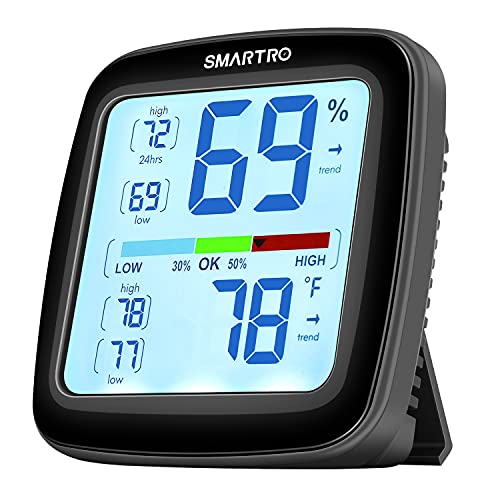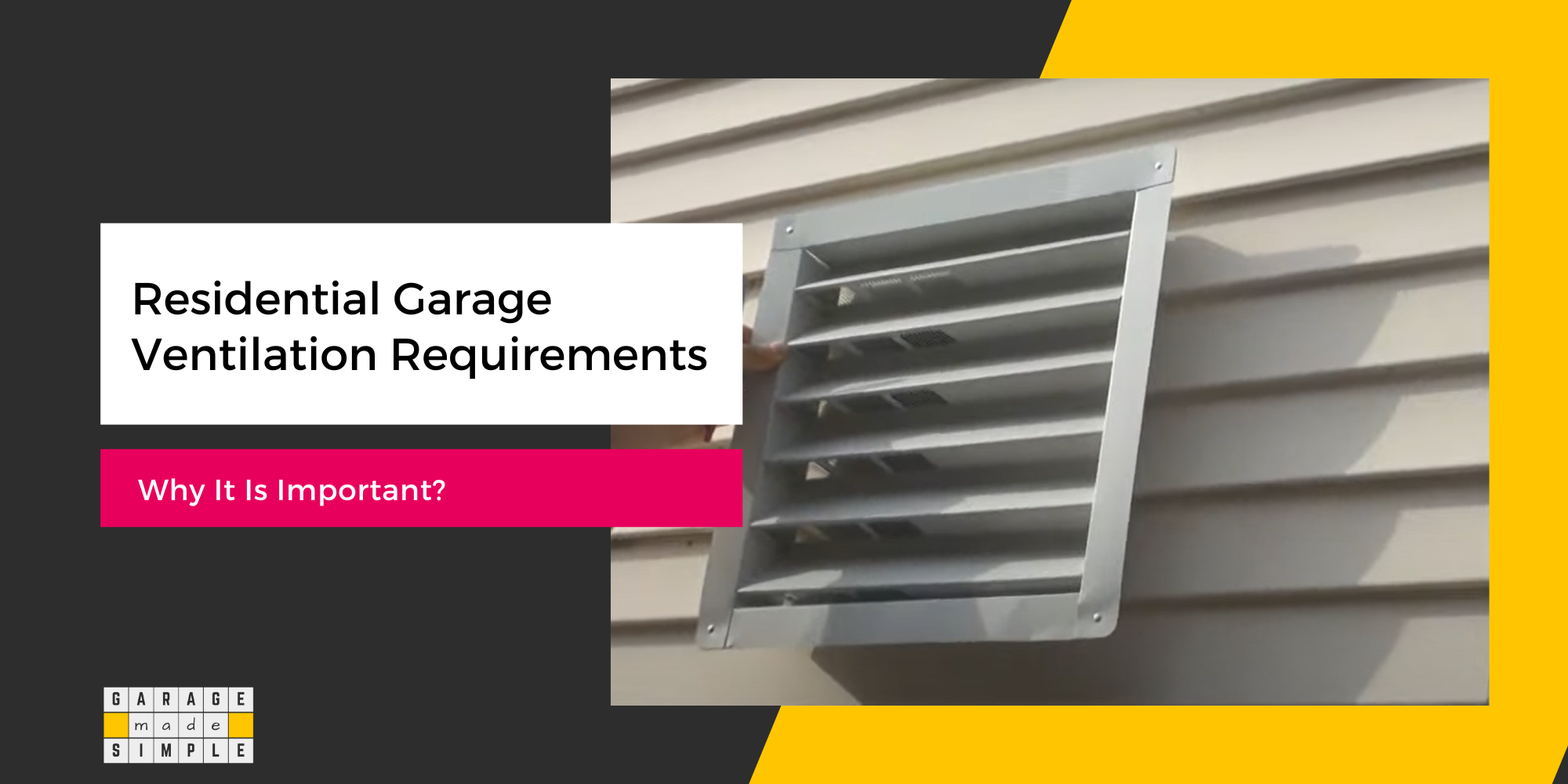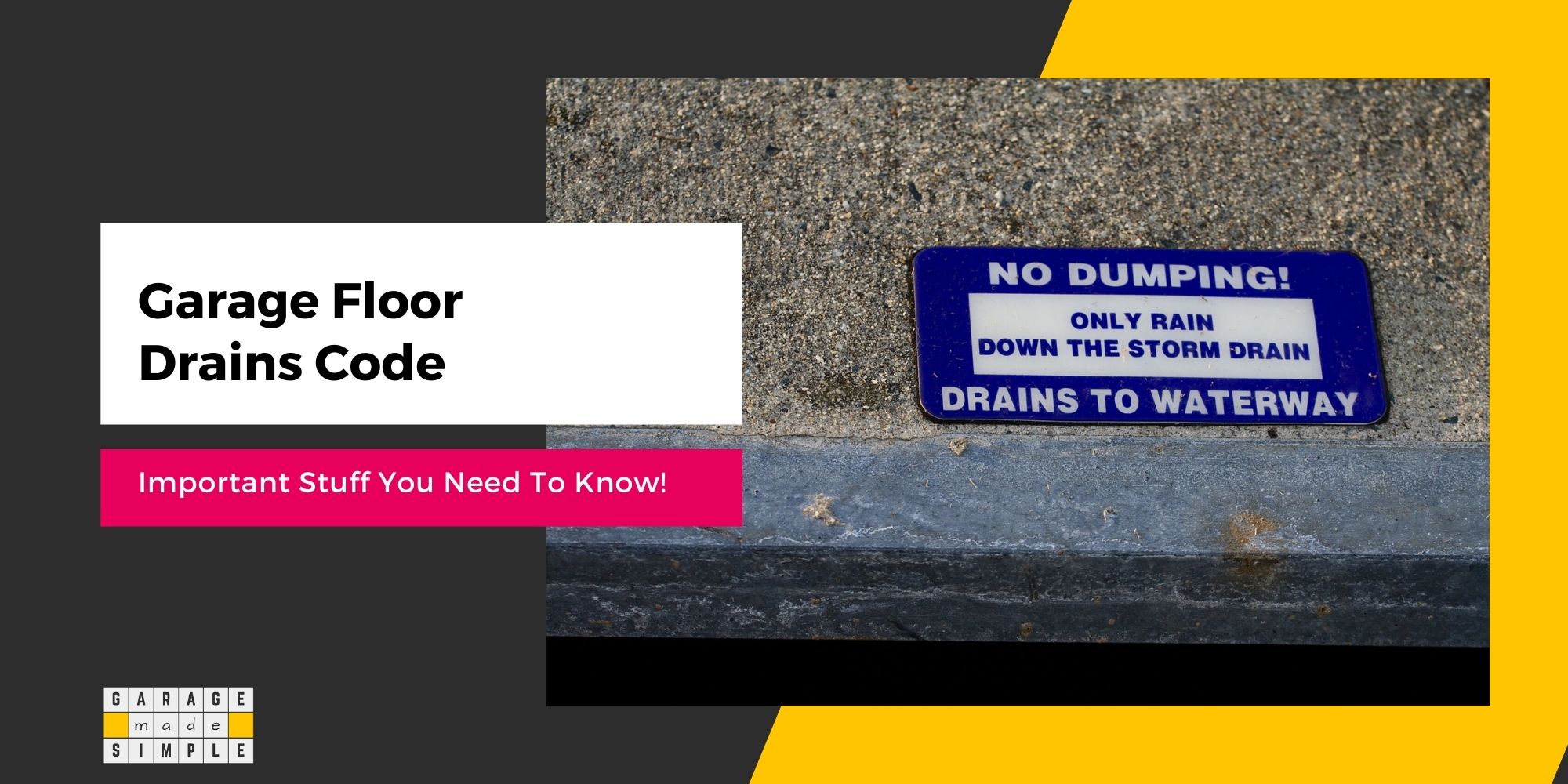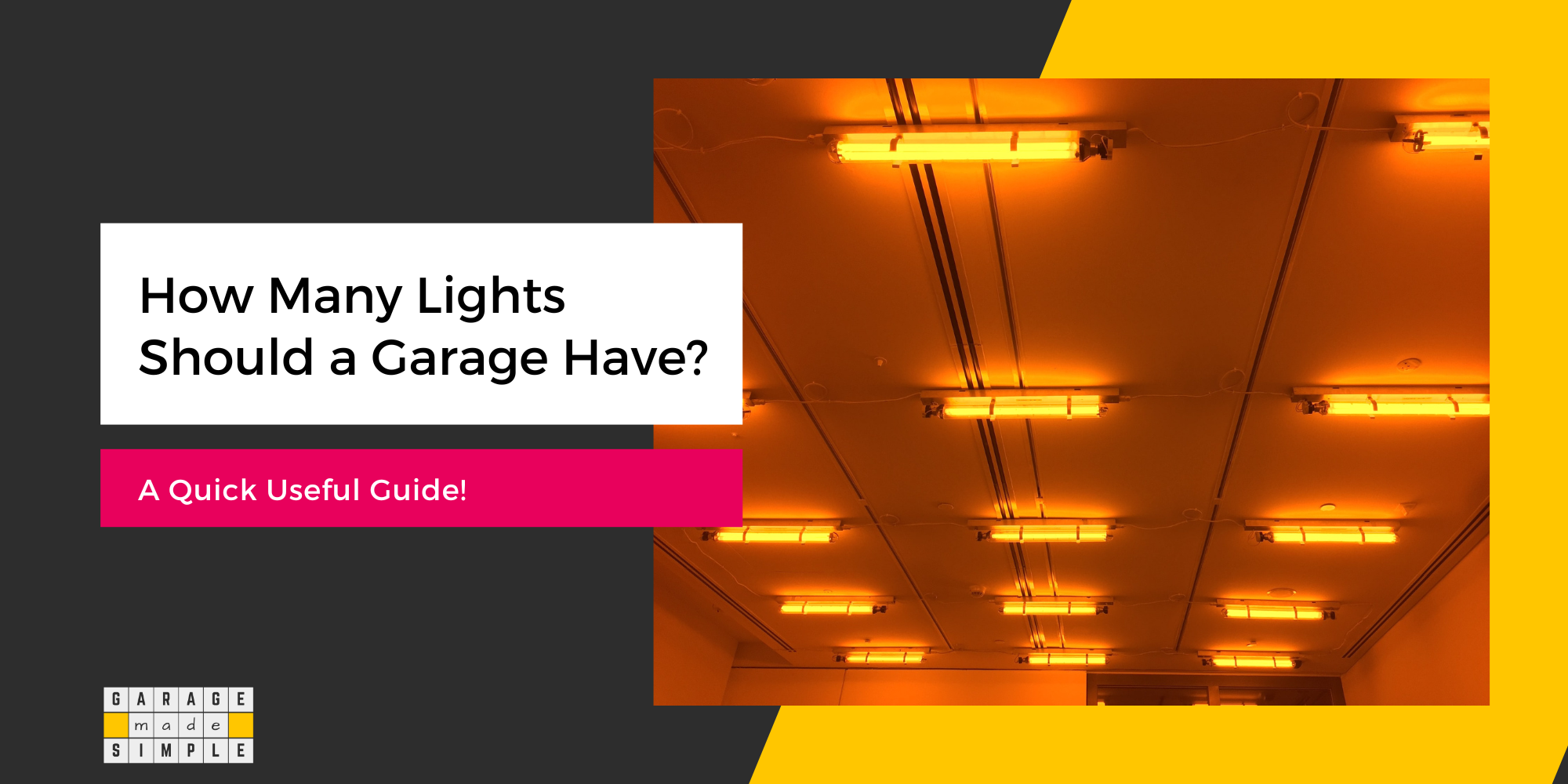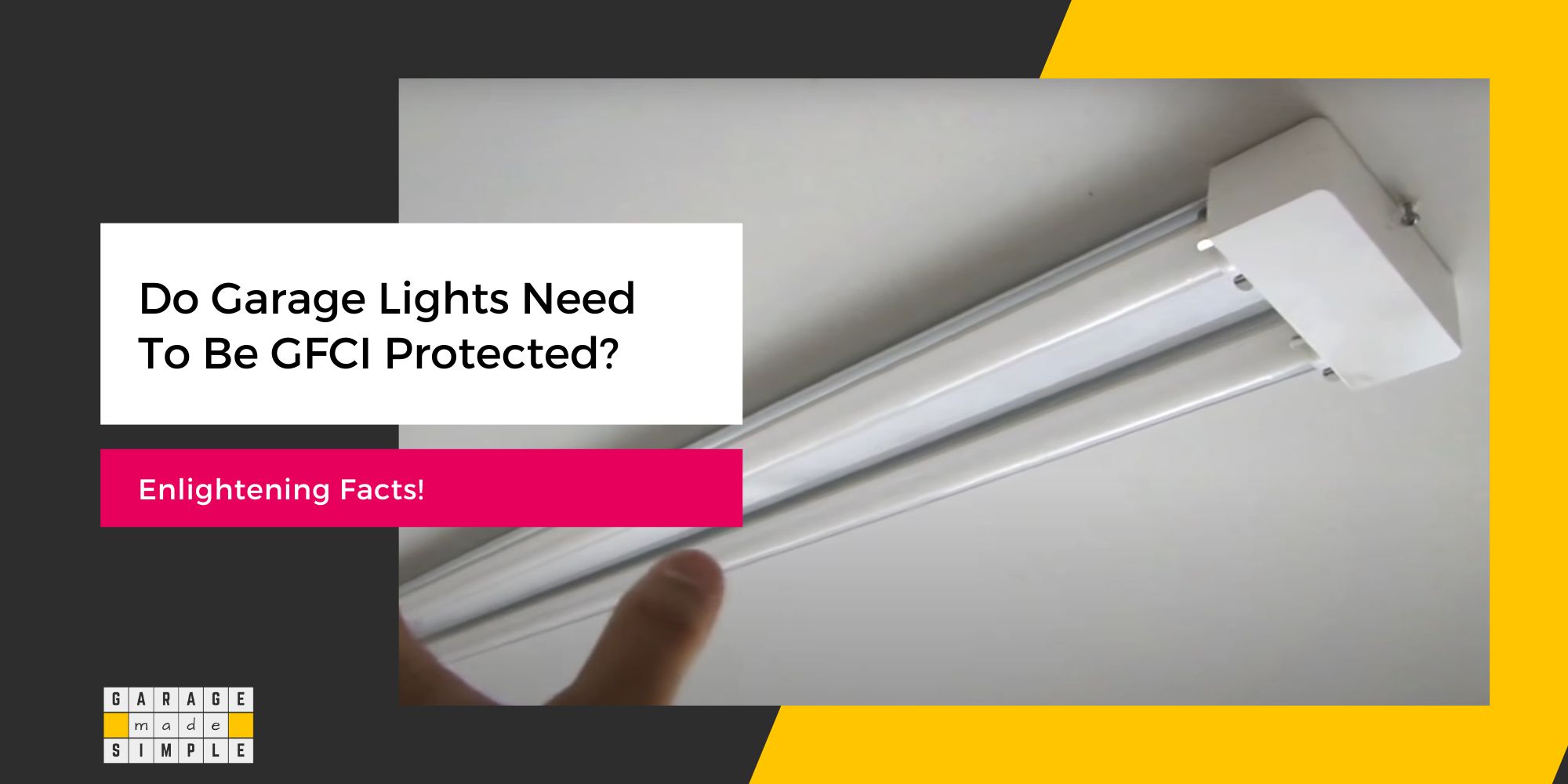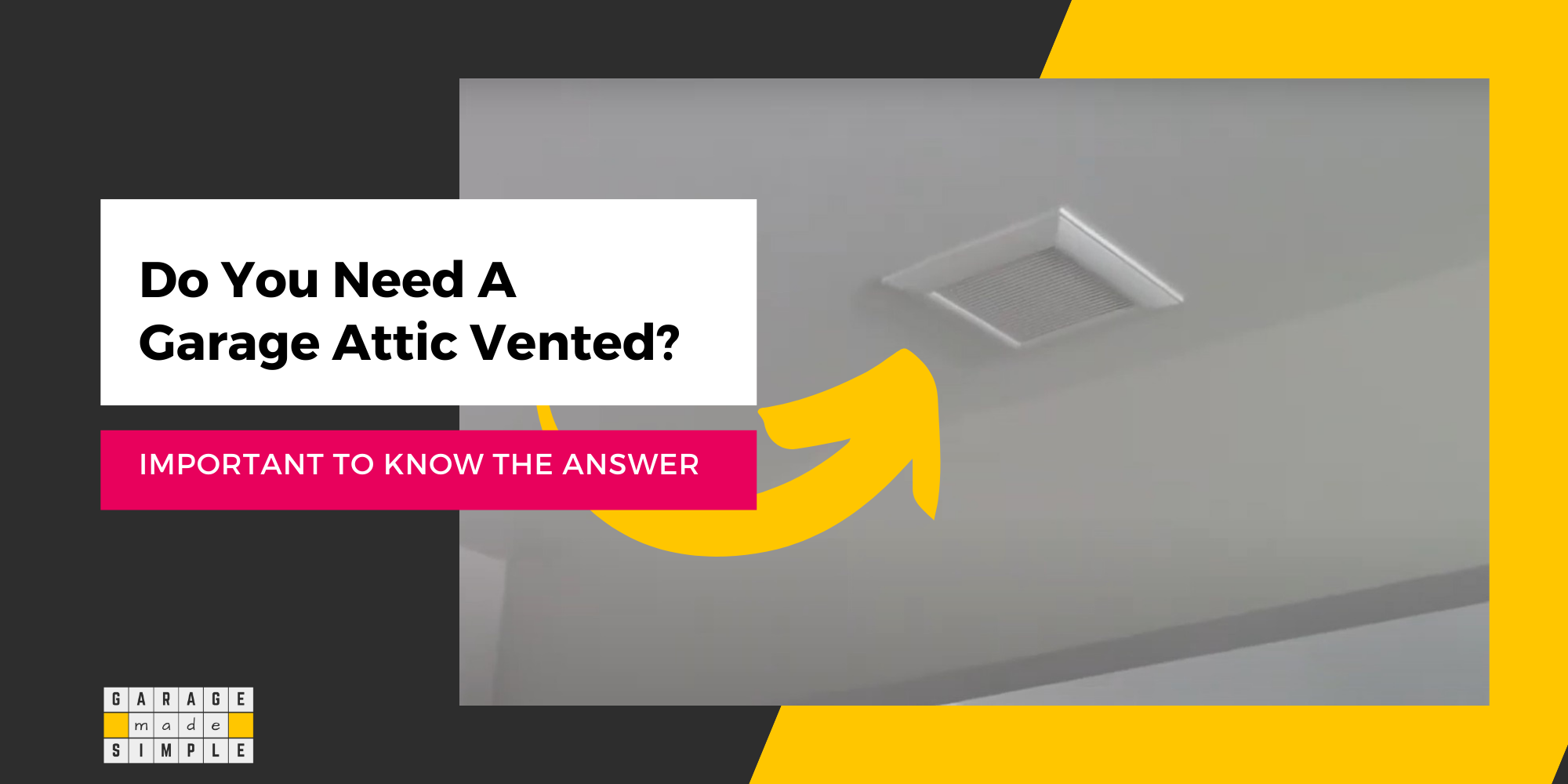Garage Humidity: Your Guide to the Perfect Level
As an Amazon Associate, I earn from qualifying purchases.
What Should Garage Humidity Be?
Do you find that tools in your garage workshop rust easily? Have you been noticing mold growth? Does your garage feel stuffy & uncomfortable? Most likely your garage humidity is too high. But what should garage humidity be?
It is best to keep the garage humidity between 40% – 45% . Consider these facts:
- For maximum human comfort, indoor humidity should be 30% – 50%
- The rate of metal corrosion & steel rusting increases significantly when humidity exceeds 45%
- Mold will not grow if humidity is kept below 60%
Garage humidity control between 40% – 45% will not only ensure maximum comfort for you, restrict mold growth but also prevent corrosion & rusting of your cars and tools.
Not every homeowner is the same. You have your own special way of utilizing your garage space. Chances are you will be using your garage for:
- Parking your cars
- Storing stuff like gardening equipment, sports goods, etc.
- Garage workshop
- Hobbies or relaxation
Garage humidity between 40% – 45% will be perfect, no matter how you use your garage!
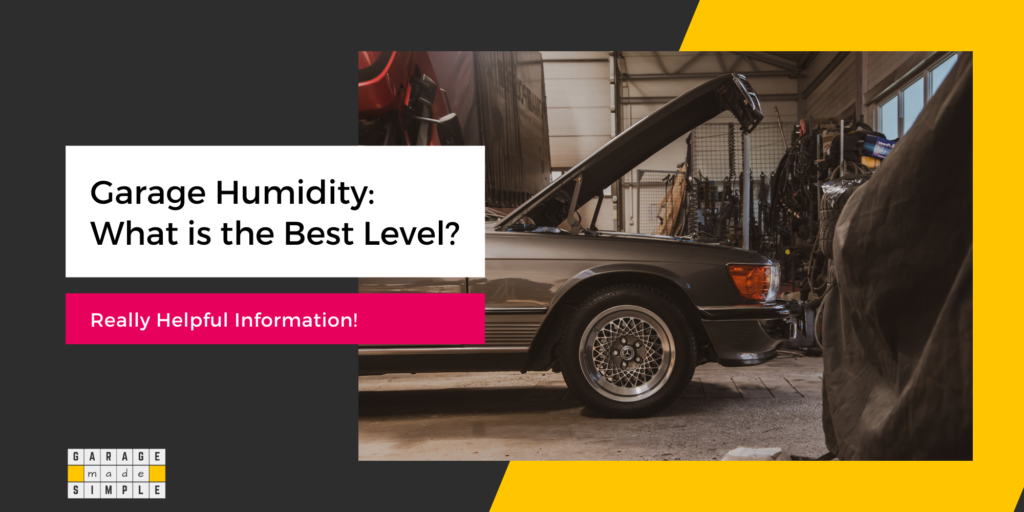
What Is a Good Humidity Level for Indoors?
In day to day conversation we often use the term “Humidity” when we actually mean “Relative Humidity (RH)”. Relative Humidity is the percent of actual moisture in the air in relation to the maximum moisture the air can hold at a specific temperature.
Relative Humidity is important for human comfort as it determines the rate of moisture evaporation from the skin which has a cooling effect on the human body. Humans can be reasonably comfortable at humidity levels between 30% and 70%.
However, most authoritative sources recommend that indoor humidity should be maintained between 30% to 50%. This humidity level is not only good for human comfort but also discourages mold growth.
You can refer to the following authoritative sources:
Humidity levels below 30% can get uncomfortable and cause problems such as dry skin and nose & throat irritation. On the other hand high humidity will encourage growth of mold and other harmful bacteria.
What Humidity Level Will Prevent Rust?
Corrosion is an electro-chemical reaction which oxidizes the metal. Rusting is specifically the corrosion of iron and steel. For corrosion to take place the presence of oxygen is of course essential.
The corrosion process is expedited by high humidity and temperature. High humidity means that moisture in the air can condense on the colder metal surface if its temperature is below the dew point. Condensate on the metal surface triggers the electro-chemical reaction of oxidation (corrosion / rusting).
It has been found that condensation is highly unlikely when humidity is lower than 45%. If there is no condensation there will be no rusting.
The chart below from ResearchGate is self explanatory.

So if you do not want your garage tools and car components to rust, maintain garage humidity at 40% – 45%.
What Humidity Level Causes Mold?
Mold spores are everywhere in the air. All they need is a food source, some moisture and ambient light conditions to thrive. Most garages meet all three requirements.
Garage humidity level of 70% or more is most conducive to mold growth. This level of humidity can cause condensation on drywall, clothes, cardboard boxes, etc. As food source in the form of cellulose is already there, mold spores will land and start multiplying.
Mold growth in the garage is not just unsightly. It has an unpleasant musty odor too. The worst thing about mold is that it is a health risk, especially for those suffering from respiratory diseases.
ASHRAE has a PDF which has a chart on “Optimal Humidity Level for Human Comfort & Health”.
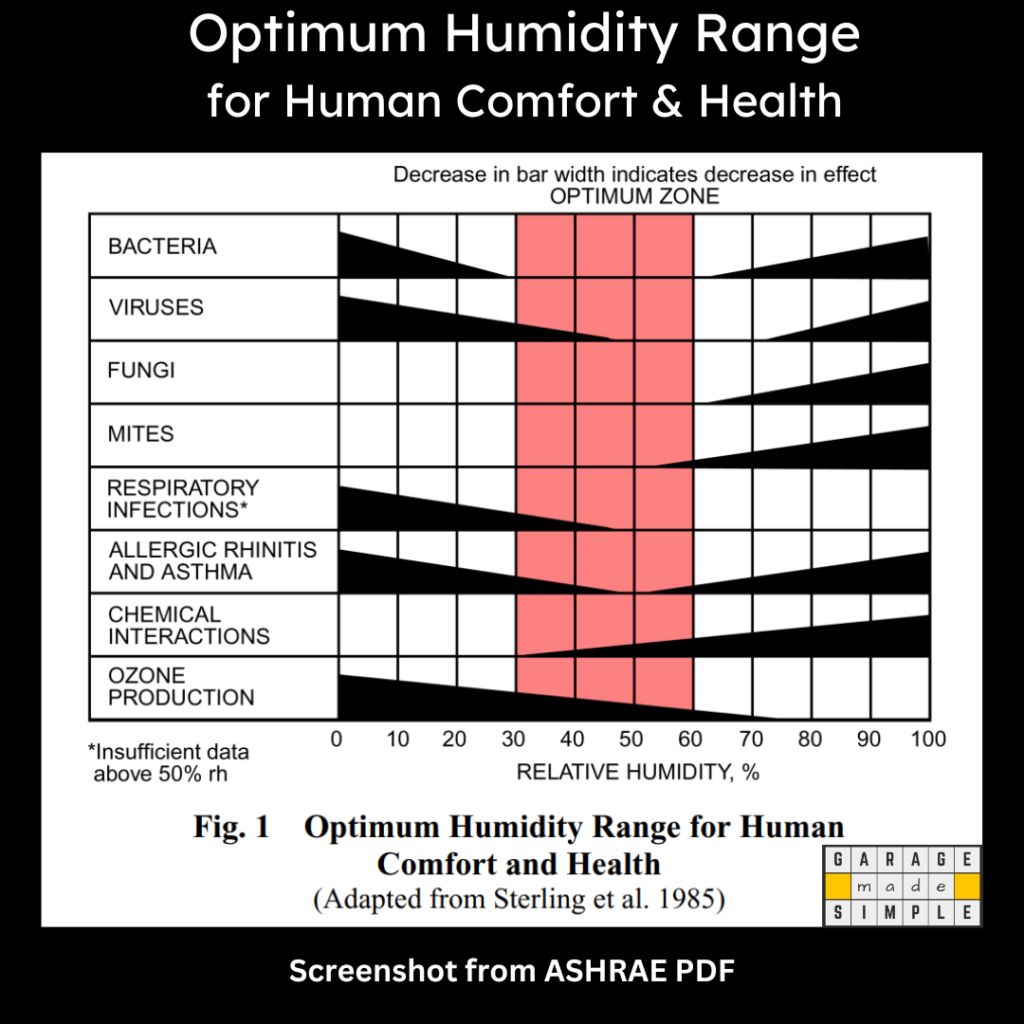
Getting rid of mold from garage walls is a difficult project. It is a lot better to reduce the risk of mold infestation by keeping the garage humidity low. Good ventilation and lighting helps too.
How Can I Lower Garage Humidity?
You need to keep the garage humidity between 40% – 45%. To achieve this goal you must:
- Minimize the entry of moisture and water into your garage. Moisture can enter your garage through the foundation walls, concrete floor, roof leaks and gaps in the garage door.
- Continuously remove moisture rich air by ensuring adequate ventilation.
I have covered these aspects in detail in my earlier article Garage Humidity Level Too High? (10 Effective Ways To Lower It!).
I would highly recommend installing a good quality digital hygrometer such as SMARTRO SC42 Professional Digital Hygrometer Indoor Thermometer in your garage.
Another great idea is to connect the garage exhaust fan or dehumidifier to a humidity sensor switch such as the one from Leviton DHD05-1LW Dual Combination Humidity Sensor.
Thank you very much for reading the post. I do hope you found it informative and useful.

